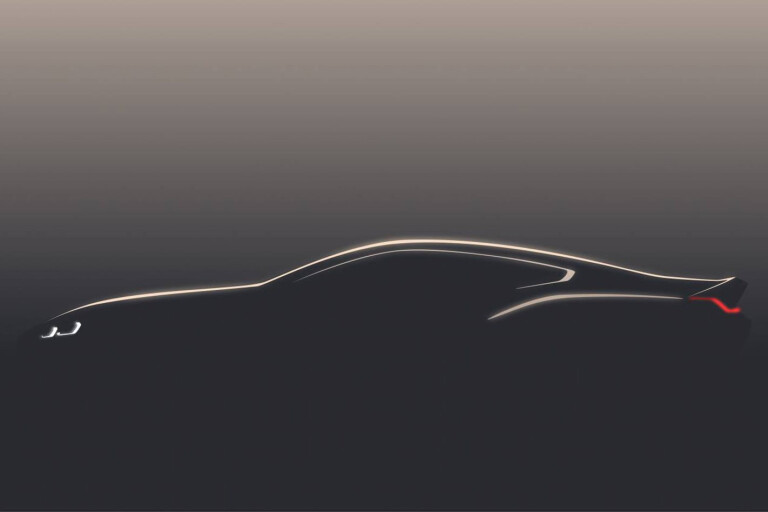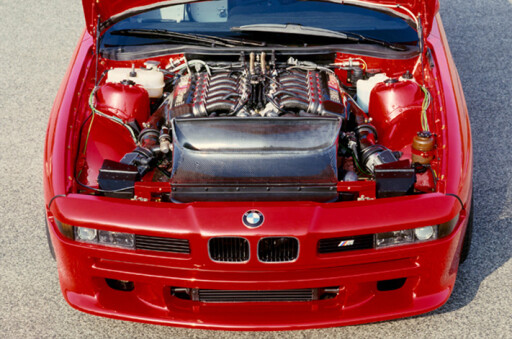
IT IS NO LONGER a rumour or petrolhead pipe dream. BMW is stoking the coals in its super coupe forge and preparing to recast the mighty 8 Series.
When the revenant luxury GT takes to the stage for its first public appearance at the Concorso d’Eleganza Villa d’Este later this month, it will end a 20-year hiatus and stir fresh speculation that the German car maker will, at last, spawn a vicious M8 for the first time in its history.
Diehard BMW aficionados and hyper coupe fans alike will delight at the possibility of an M-powered big two-door with looks to melt hearts, but you may be surprised to learn that we have been here before, and that an M8 once came close to becoming showroom reality.
We have to travel way back to the late 1980s to pick up the origins of the 8 Series badge and the launch of the first generation but, while the lifecycle of the production model is not hard to trace, there were incredibly secret development projects underway behind the scenes.

While both a more affordable six-cylinder 830i and convertible version were conceived, neither could be justified and were widely known about, but it would be more than a decade before even the existence of a barmy bahn-storming full-fat M8 was confirmed by the brand.
In production form and over its ten-year evolution, the 8 Series was offered in entry 840i, 850i and 850CSi varieties ranging from a 4.0-litre V8 to the rare 5.6-litre V12 that powered the CSi but, for the top secret M8 project, the engineers pulled out all the stops.
With 6.1 litres and 410kW at its disposal, the M8’s engine was just the start of the manic skunk works developments that took what was already a capable GT coupe and turned it into a snarling supercar.
Its cabin was an unashamed exploitation of synthetic suede, which extended to the pair of Kevlar bucket seats, complete dashboard, doors, roof and centre console, but not to the rear seats because they had been removed in the name of weight saving.

Exotic composite materials were still in their infancy, but that didn’t stop the engineering team fabricating the inlet manifolds, plenum chambers, dashboard and wheels from carbon and Kevlar blends, while the bodywork was also the result of extensive modification.
The bonnet was vented and the pop-up headlights of the road car were deleted to make room for the massive engine and cooling system below, a svelte bodykit shouted M-car performance with a nod to the M1, a new vent behind each of the doors fed air to engine and transmission oil coolers, while the lower-drag panda-ear door mirrors completed the package.
Performance figures were never made official but a top speed of 320km/h has been speculated, so why wouldn’t BMW give the green light to a handsome beast of a bruiser that could have embarrassed some serious supercar royalty of the time?
The answer may lie in its spectacular engine…

A 6.1-litre naturally aspirated BMW V12 built in the early 1990s? It doesn’t take Holmes and Watson to draw a line to the McLaren F1.
Urban myth states that the BMW M8 engine was the very same that would power the iconic McLaren into the record books but, in fact, it wasn’t.
The BMW’s S70/1 engine displaced 6061cc while the F1’s S70/2 had 6064cc to its name and produced 51kW more with a number of external dimensional differences, but there’s no denying the pair shared DNA.
While BMW’s official reason for not giving the M8 a green light was somewhat ambiguously due to the lack of demand for the car and a prohibitively high showroom price due to the massive development costs.

Instead of going it alone, it is likely BMW saw a better business case in supplying the S70/2 (and later S70/3) to McLaren and recoup development costs, but in doing so may have ruled out using such a mechanically similar engine for its own purposes. No doubt, the motoring fraternity would have labelled the M8 engine a detuned McLaren F1 donk.
But what if BMW had pushed ahead with the M8 production car and forced McLaren to consider other engine options?
In addition to the BMW partnership possibilities, McLaren was also in discussions with Honda who had been briefed to pitch for a 410kW engine based on the Formula One engine in service at the time.
Without BMW’s manic V12, a Japanese-engined McLaren would not have gone on to crack the dizzying 372km/h record top speed and would have been forced to share the supercar limelight with BMW’s gorgeous M8.

The German car maker would also have had enough punch to jump in the ring with Ferrari, Lamborghini and Porsche, which at the time were fighting it out with the 512 TR, Diablo and 964 911 Turbo.
Looking further into the future, if BMW had spawned another back-to-back generation of the M8, it would have also had a model to compete with Audi’s first supercar – the R8 – when it arrived in 2006.
How different the supercar landscape could have been.
Until BMW tears the covers from its second-generation 8 Series, the all-new model will remain just a tantalising but gorgeous coupe profile - but the potential for an M8 is more than just speculation.
Information provided by the World Intellectual Property Organisation offers a glimpse at the company’s intentions with applications submitted to protect not just the M8 name but also M8 CS.
It seems this hi-po, big boss coupe party is only just getting started and when it emerges, the M8 has the potential to shake up the high-performance car world once again.



COMMENTS